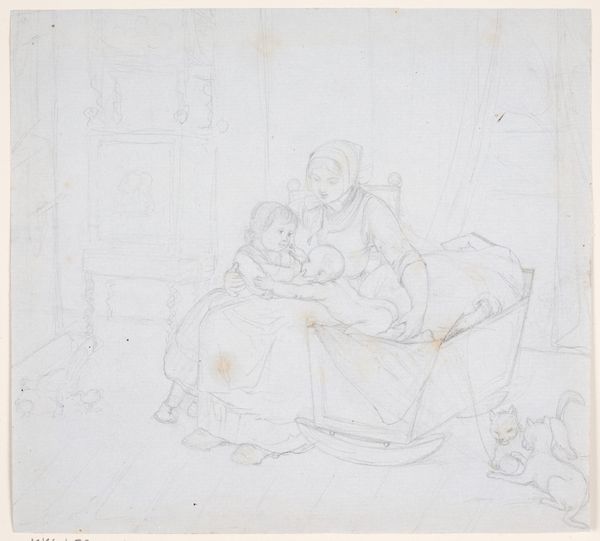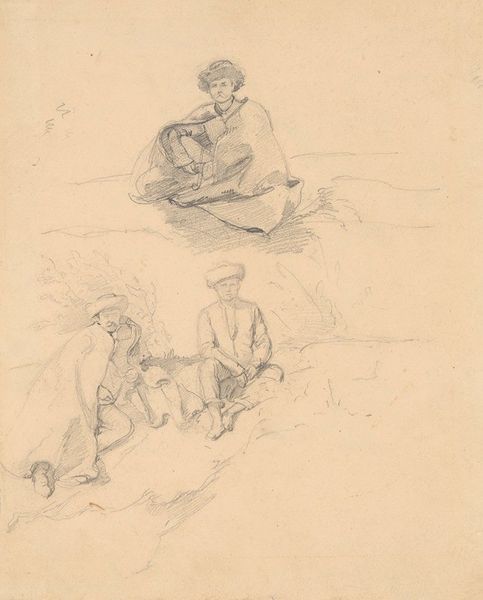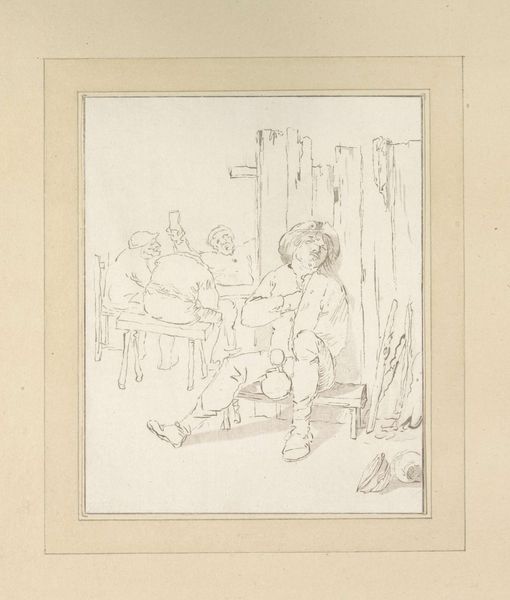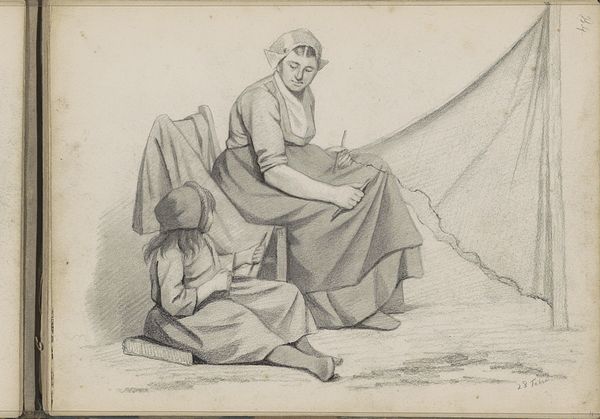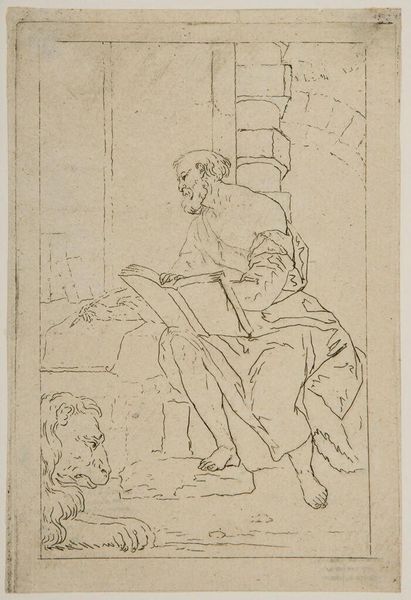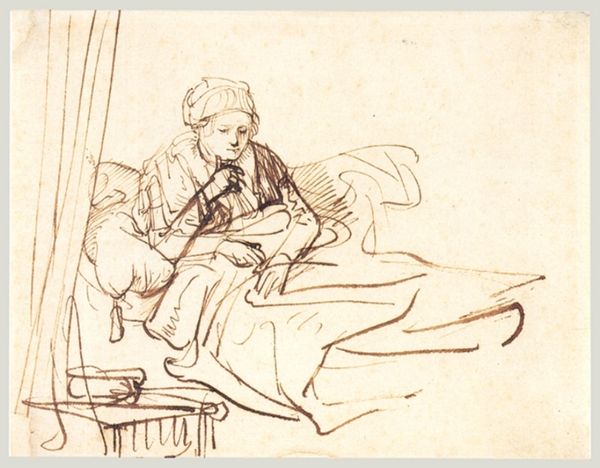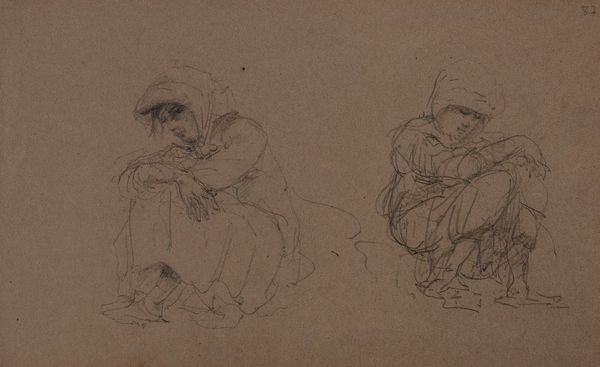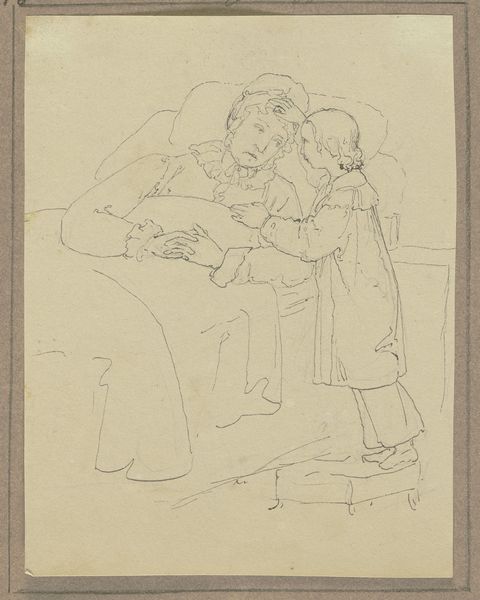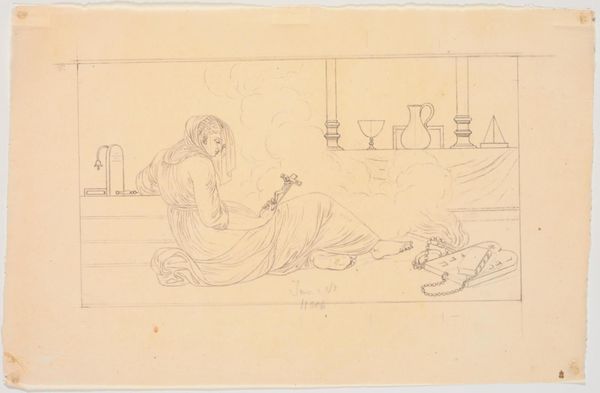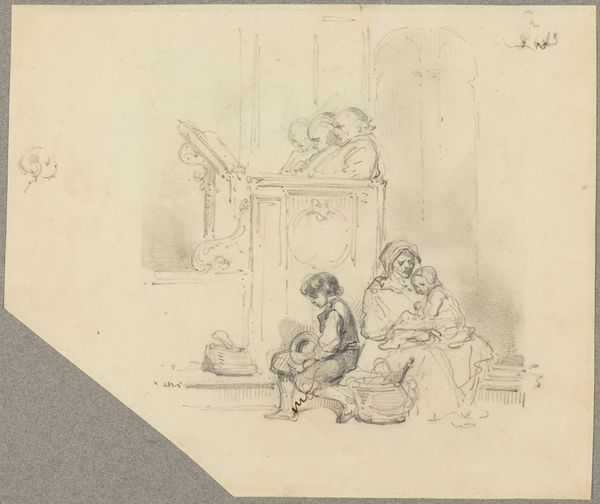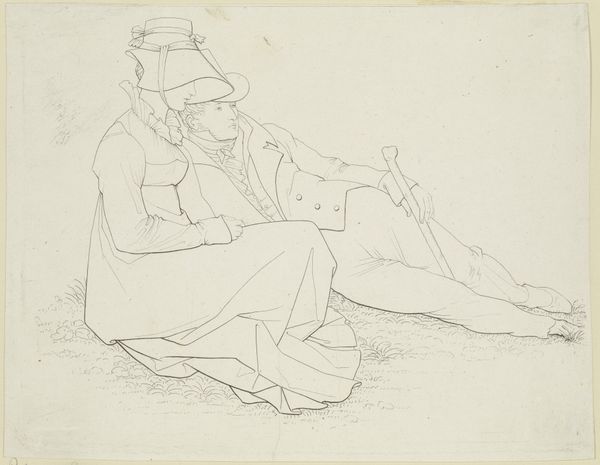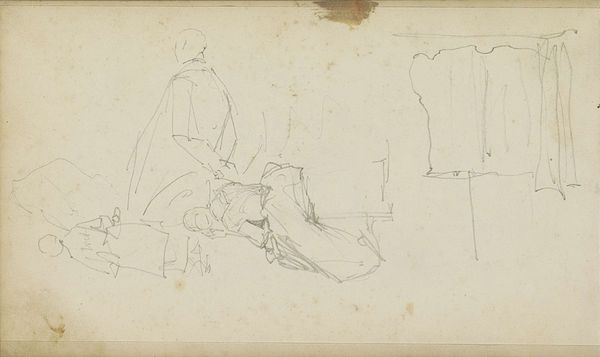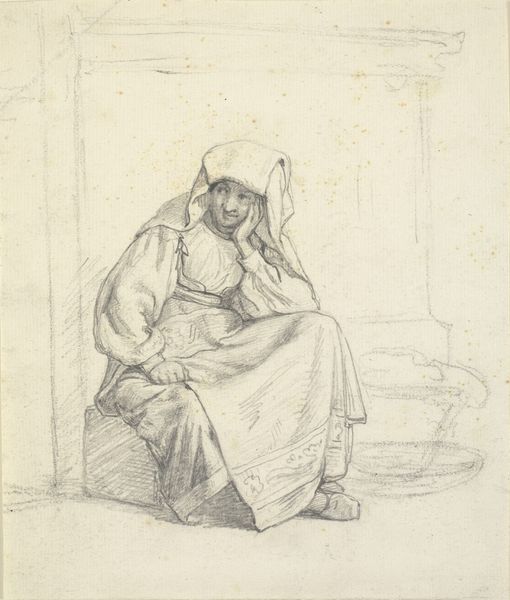
Copyright: Public Domain: Artvee
Editor: This drawing, "Students in the Latin Quarter, Paris" by Elihu Vedder, was made around 1858 using pencil. The two figures seem burdened by something, there's a mood of quiet resignation in their posture. How do you interpret this work? Curator: I see a snapshot of a very particular kind of male intimacy and precariousness. Think about the position of artists in the mid-19th century. Were they challenging academic conventions? Who had access to formal training and exhibition spaces? What did it mean to be a 'starving artist' in a city like Paris at that time? Editor: That's interesting. So their postures aren’t just about physical fatigue, but maybe about the pressures they faced as artists? Curator: Precisely. This quiet interior can be read as a space of resistance against bourgeois values, and also as an intersection for anxieties about class, masculinity, and artistic success. We should think about who had the privilege to even pursue art in Paris at the time, and whose stories weren't being told. Who is absent from this drawing, and why? Editor: I hadn't considered the political undertones, but situating them in that historical context really opens up new interpretations. Curator: Exactly. Art doesn't exist in a vacuum. Considering the social and political landscape is essential to a fuller understanding. Editor: I’ll definitely approach artworks with those questions in mind now, considering the context and absences as much as what’s visible.
Comments
No comments
Be the first to comment and join the conversation on the ultimate creative platform.
